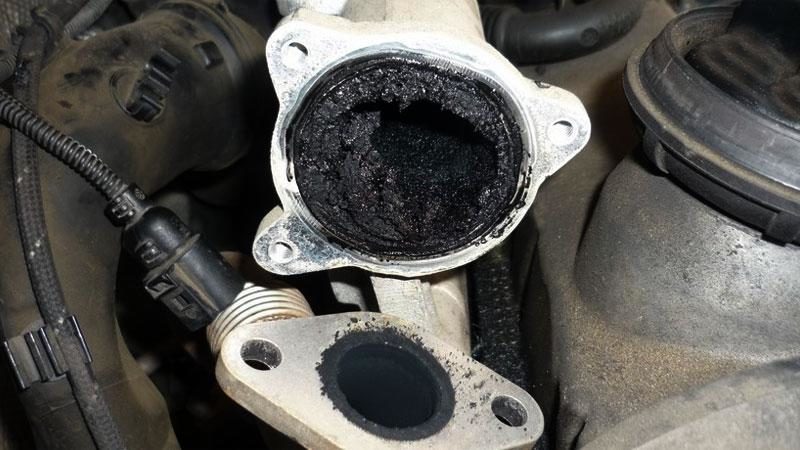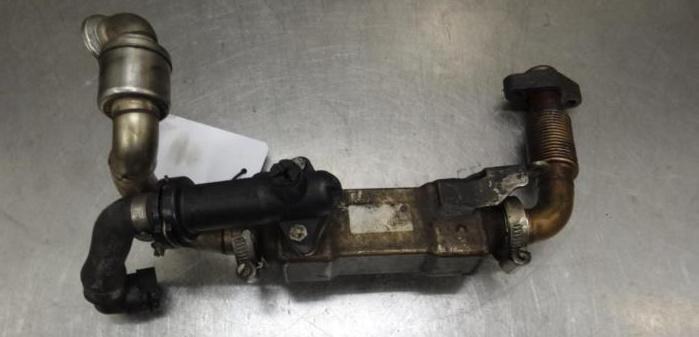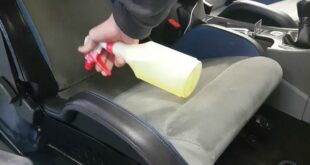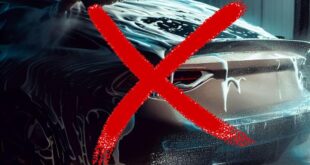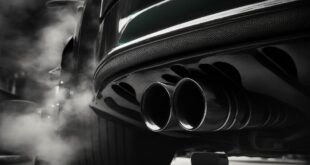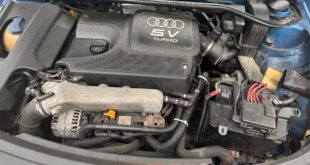The main function of exhaust gas recirculation (EGR or EGR - Exhaust Gas Recirculation) is to reduce the emission of nitrogen oxides (NOx). With regard to diesel engines, exhaust gas recirculation plays a central role in reducing nitrogen oxide emissions. The formation of nitrogen oxides increases with increasing combustion temperature. By adding exhaust gas to the intake air, the concentration of oxygen molecules in the mixture is reduced, requiring less fuel to fully burn the mixture. The addition of exhaust gas affects the energy, reaction rate and temperature of combustion, resulting in less formation of nitrogen oxides. The effect is enhanced by additional exhaust gas cooling.
EGR delete / EGR off
A distinction is made between internal and external exhaust gas recirculation. Disabling exhaust gas recirculation mainly affects the external method. The exhaust gas is taken from the exhaust tract and returned to the intake tract through a line, a cooler and a valve. This method leads to increased formation of soot, especially with increasing engine load. Over time, these soot particles can clog the exhaust gas recirculation valve and diesel particulate filter.
The use of exhaust gas recirculation in diesel engines creates a dilemma. On the one hand, the amount of nitrogen oxides should be reduced, on the other hand, the formation of soot should be minimized. A balanced technical approach is required to resolve this conflict. The main problem with exhaust gas recirculation is the increased formation of soot, which can lead to a defect in the exhaust gas recirculation valve. This can lead to poor throttle response, significant loss of power and even increased fuel consumption, which in turn leads to increased maintenance and repair costs.
disable is possible but not legal
Many garages offer an EGR removal service, which involves removing the EGR system from the vehicle's engine control unit. After removal, the vehicle behaves as if it still has the EGR system but with no error messages and no check engine light illuminating. The deactivation of the EGR system is however exclusively for use off public roads thought.
The procedure, without a vehicle on site: In order to be able to use the service, the workshop needs the binary file from the vehicle's engine control unit. There are several manufacturers including Alientech, Flashtec, AMT Cartech, Dimsport, FG Technology, Magicmotorsport, PCMFlash, etc. that offer tools to read and write the ECU. The engine control unit is read out with the appropriate tool and saved as a file. The file is then sent to the workshop. The EGR functionality is removed from the file by the service and can be downloaded and installed again. This completes the process. If the vehicle is on site in the workshop, the process is similar.
Information about the EGR/EGR cooler
A central part of the exhaust gas recirculation system is the EGR cooler. This bottle-shaped component, made of stainless steel or aluminum, has various connections and lines through which hot exhaust gases and coolant are fed into the radiator. After cooling, the cooled exhaust gases exit the cooler and are precisely timed to be reintroduced into the combustion process. This reduces nitrogen oxide emissions even before they reach the catalytic converter. The EGR cooler is located between the exhaust and intake manifolds.
Possible defects in an EGR cooler
Although the EGR cooler is not considered a consumable part, damage can occur due to the extreme temperature differences that exist within the cooler. For example, the formation of aggressive combustion products within the cooler can lead to leaks in the long term, which often occur on the exhaust side of the cooler due to the high temperatures. Another problem can arise from a crack in the EGR cooler. With such a defect, the exhaust gas pressure can escape uncontrolled and is therefore no longer available to the turbocharger, which leads to a lack of boost pressure.
Signs of a leaking EGR cooler
An indicator of a leaking EGR cooler can be the gradual loss of coolant along with increased engine temperature. Such a loss often goes unnoticed, since the exhaust back pressure is higher than the pressure in the cooling system when the engine is running. As soon as the engine is switched off, the pressure drops and the coolant enters the engine. When the vehicle is restarted, so-called "water hammer" can occur, which can cause considerable damage to the piston, connecting rod and cylinder. In conclusion, it can be said that if you regularly have to top up the coolant level in your diesel vehicle, it would be advisable to visit a workshop to avoid the risk of engine damage.
The following note is essential: For safety reasons, tuningblog recommends all repair, inspection and maintenance work exclusively to be carried out in a specialist workshop! Although our information is summarized to the best of our knowledge and belief, we cannot assume any liability for the content. All information is therefore "without guarantee".
Of course, that wasn't the end of it!
In this tuningblog category there are guides and instructions for common defects/repairs on the vehicle and for installing accessories/tuning parts. Our articles explain in a simple way common defects and the corresponding repairs and they also explain how the first signs of a defect become noticeable. In most cases, we also have initial clues to the repair instructions in our repair instructions approximate costs listed.
The goal of ourAuto Repair Guide“ is to create a head start in knowledge for the next visit to the workshop with initial tips. This may save you from tedious troubleshooting and you may even be able to do small things yourself. The same applies, of course, to the installation of accessories/tuning parts. Here, too, we would like to help with the implementation with instructions and tips. There are many other posts on this as well. Below is an excerpt of the last and HERE there are all previous instructions.
 tuningblog.eu Your magazine about tuning the car
tuningblog.eu Your magazine about tuning the car
